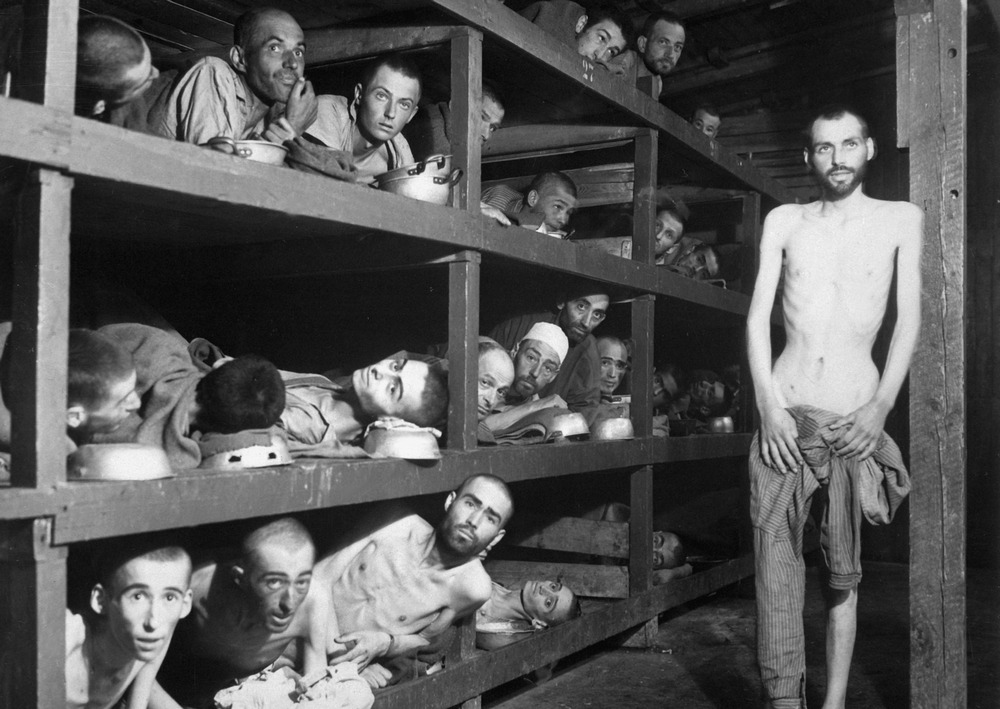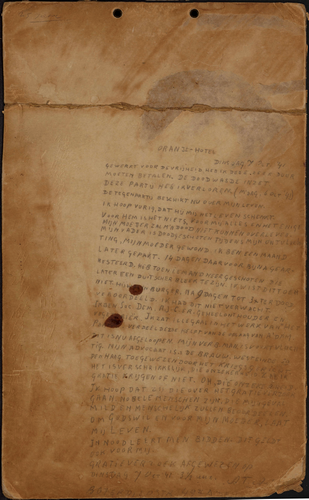
Imprisoned by the Germans
20.000 arrested
Almost 20,000 Dutch people were arrested because of their work with the resistance. Two thousand resistance fighters were executed. Others were sent to detention centres or to concentration camps.
Brutal
German imprisonment was brutal. Solitary confinement, beatings and malnutrition were part of the daily routine. Several thousand Dutch resistance fighters did not survive their imprisonment.
To the camps
In the Netherlands there were prisoner camps in Schoorl, Amersfoort, Ommen and Vught. Most Dutch prisoners ended up in the German concentration camps at Buchenwald, Mauthausen, Neuengamme, Sachsenhausen or Dachau. Female prisoners were sent to Ravensbrück.

Farewell letter

On the back of a Scheveningen prison ‘regulation sheet’ Arie Addicks, distributor of Het Parool, who had been sentenced to death, wrote an emotional farewell letter:
‘Having worked for freedom, I’m now having to pay a huge price for it. The stake was death. I lost this match. [M’day, 6 Oct. ’41) The other player now has my life in his hands. I very much hope he will spare my life. It’s nothing to him, to me it’s all and everything. My mother will not be able to survive my death.’
Addick’s petition for a pardon was rejected on October 7th and the death sentence was carried out that same day.
Christmas tree
In Weteringschans Prison in Amsterdam, Carel Steensma made a Christmas tree out of the cardboard used for blacking out the window. The strips were cut with a fork that had been sharpened on the floor.
The snow is made from a bandage wrapped around a gunshot wound, the decorations from the silver foil of medicinal powders. During the day the tree was kept hidden.
On Christmas Eve 1941, carols were sung round the tree. The prisoners from all the other cells soon joined in.


